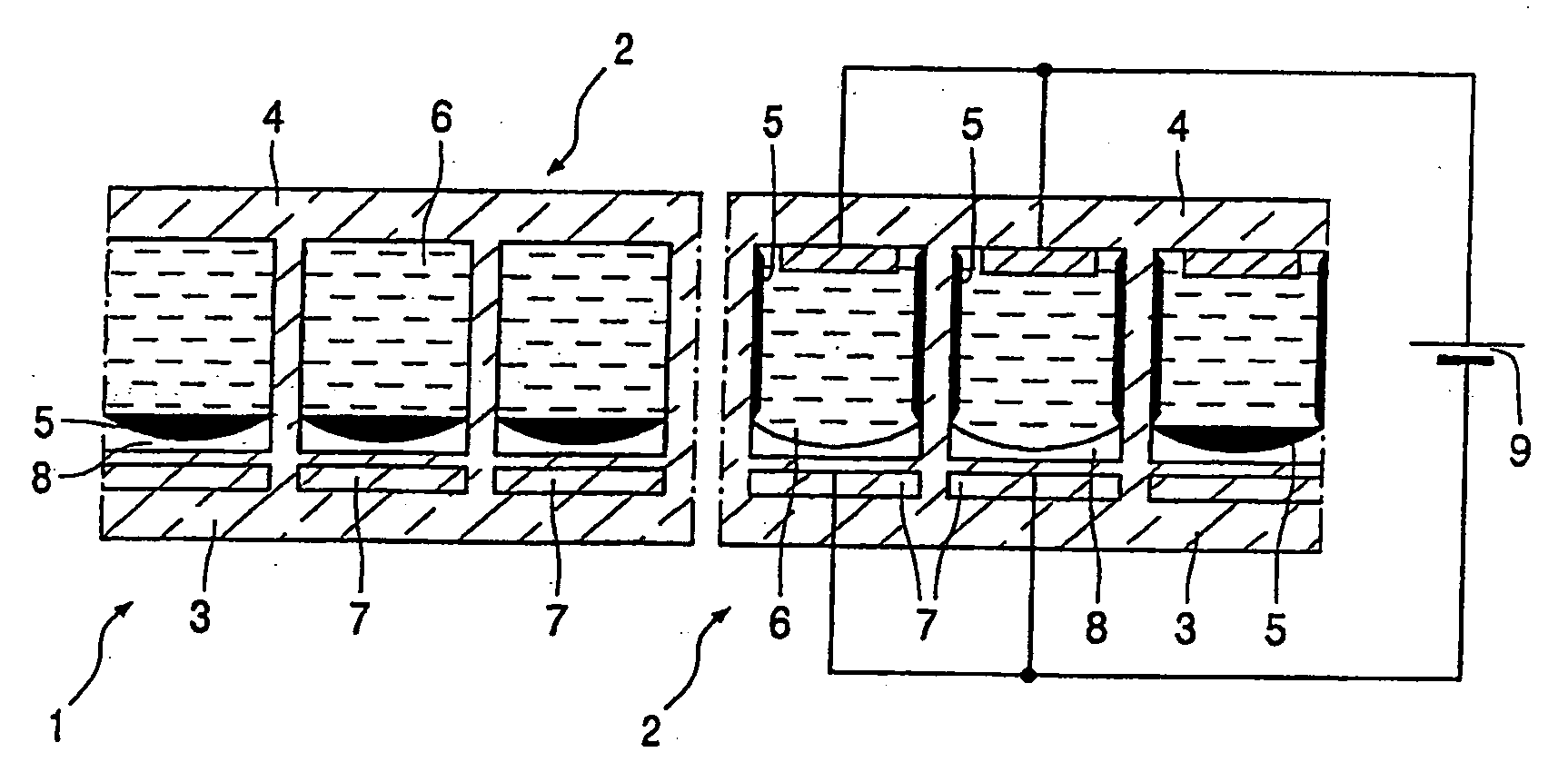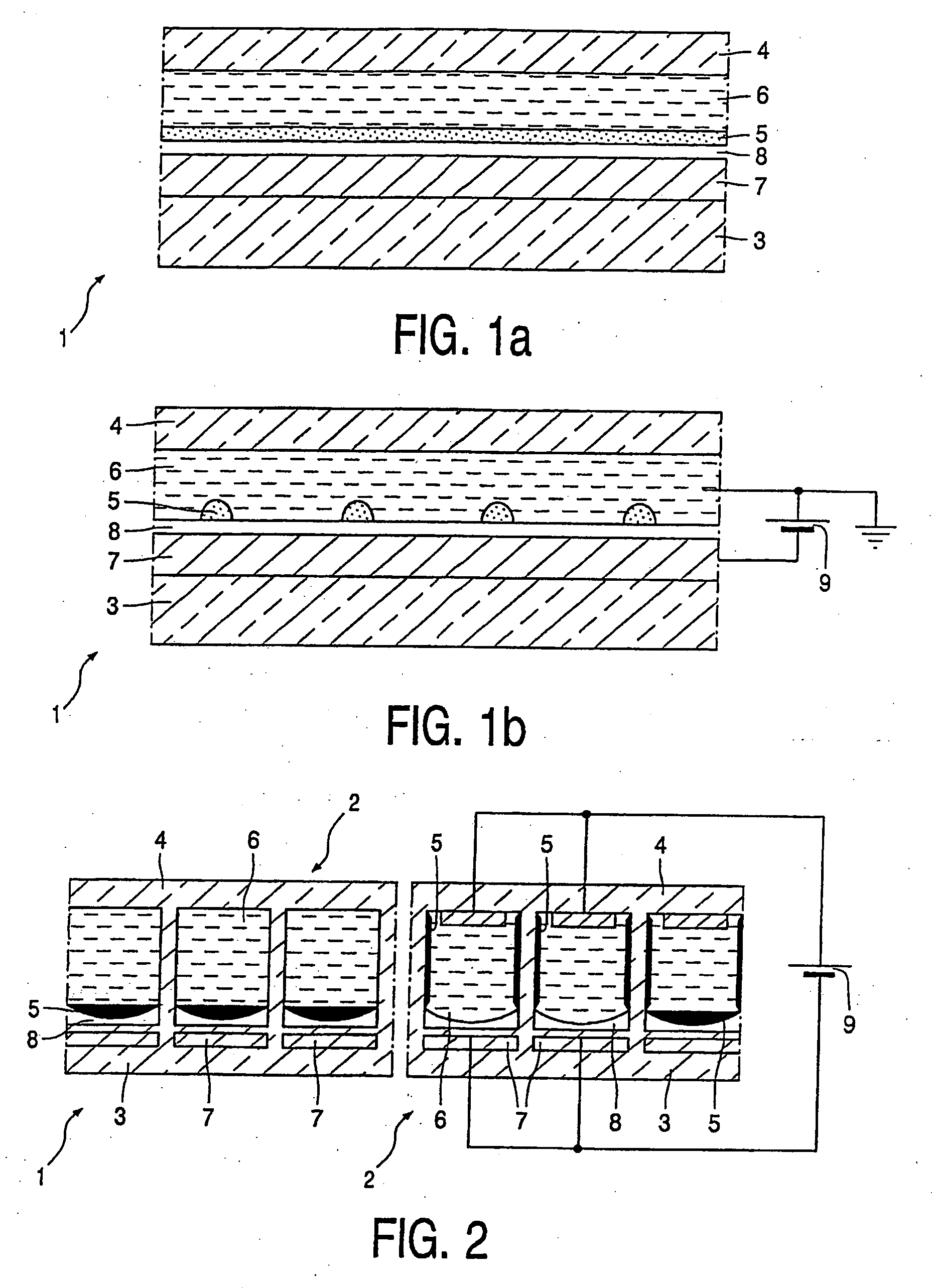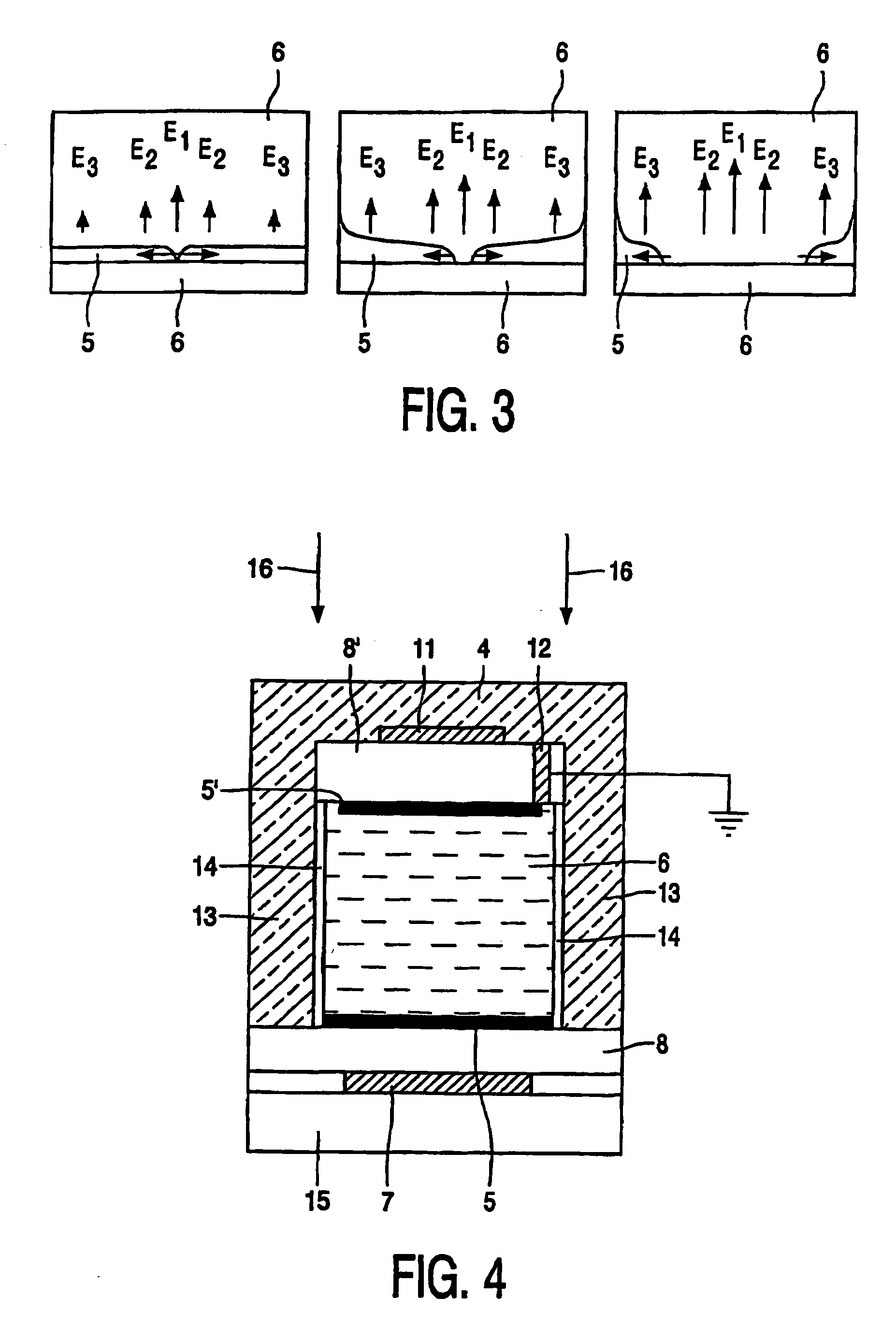Display device
- Summary
- Abstract
- Description
- Claims
- Application Information
AI Technical Summary
Benefits of technology
Problems solved by technology
Method used
Image
Examples
example 1
Three-Color Display
[0048]In the embodiment of FIG. 5, the oils 5 have different colors by using different dyes to realize a color display. In this example, three kinds of, e.g., oil are used, viz a red layer 5R, a green layer 5G and a blue layer 5B, to obtain the highest possible brightness for the configuration shown in FIG. 5. A single pixel comprises a black absorber 23 (background) and two sub-pixels A and B, each having a configuration comparable to the one shown in FIG. 4. The oil layer 5B on the top in the first state covers half of each of the sub-pixels. This can be achieved by locally modifying the surface energy of the layer 8′ (AF 1600). The other fluid, in this case water is assumed to be at a fixed voltage, for example ground (0V) via electrode 12.
[0049]To obtain a red colored pixel in this configuration, electrode 17 underneath the red layer of oil 5R should be grounded (0V), whereas electrode 18 underneath the green layer of oil 5G and electrode 11 above the blue lay...
example 2
Three-Color Plus White Display
[0053]The variation in brightness in the white state arising in Example 1 can be circumvented by using a white oil. A white oil is, e.g., obtained by dispersing scattering particles in the oil.
[0054]The configuration shown in FIG. 6 uses such a white oil. In a similar way as in Example 1, different colors are obtained by providing voltages to electrodes 17 (underneath the red layers of oil 5R), the electrodes 18 (underneath the green layers of oil 5G), the electrodes 19 (above the blue layer of oil 5B) and the electrodes 20 (above the white layer of oil 5W). The result is given in Table 2.
TABLE 2VoltageVoltageVoltageelectr.electr.electr.VoltageVoltageBrightnessColor121718electr. 19electr. 20(%)Red00VVV50Green0V0VV50Blue0VV0V50White0VVV050Black0VVVV0
[0055]As in the previous example, the color ordering can be altered if necessary. Also, for example, a high brightness white state, reflecting 100%, can be achieved when the black absorber 23 is replaced by a...
example 3
Subtractive Color Display
[0056]Alternatively, as shown in FIG. 7, subtractive colors may be used. If two oil-layers 5 inside each sub-pixel are used, one primary color per sub-pixel can be achieved. If a fixed subtractive color filter 21 is provided on top, a major improvement of the display performance is obtained. The pixel shown in FIG. 7 consists of three sub-pixels A, B and C. In each of the sub-pixels, the order of the subtractive colors alternates, i.e., M(agenta), C(yan), Y(ellow) for sub-pixel A, C(yan), Y(ellow), M(agenta), for sub-pixel B and Y(ellow), M(agenta), C(yan) for sub-pixel C.
[0057]It is now possible to make each of the primary colors in at least two of the sub-pixels. For instance, in sub-pixel A, the magenta color filter part 21M absorbs green and the (switchable) yellow bottom oil layer 5Y absorbs blue. If the top cyan oil layer 5C, which absorbs red, is switched to a transparent state, the red light is reflected by the white background layer (reflector 22) a...
PUM
 Login to View More
Login to View More Abstract
Description
Claims
Application Information
 Login to View More
Login to View More - R&D
- Intellectual Property
- Life Sciences
- Materials
- Tech Scout
- Unparalleled Data Quality
- Higher Quality Content
- 60% Fewer Hallucinations
Browse by: Latest US Patents, China's latest patents, Technical Efficacy Thesaurus, Application Domain, Technology Topic, Popular Technical Reports.
© 2025 PatSnap. All rights reserved.Legal|Privacy policy|Modern Slavery Act Transparency Statement|Sitemap|About US| Contact US: help@patsnap.com



